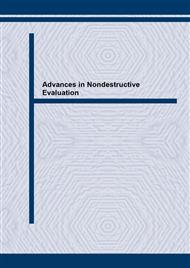[1]
Koichi Masubuchi: Analysis of Welded Structures (Residual Stresses, Distortion, and their Consequences, Pergamon Press, (1980).
Google Scholar
[2]
A. J. A. Parlane: Residual Stresses in Thick Weldments (A Review of Contemporary Measurement Techniques, The Welding Institute, Abington, Cambridge, England, Aug. (1977).
Google Scholar
[3]
Yukio UEDA: Establishment Computational Welding Mechanics, Trans. JWRI, Vol. 25, No. 2, (1995).
Google Scholar
[4]
Y. Ueda, Y. C. Kim, K. Garatani, T. Yamakita and H. S. Bang: Mechanical Characteristics of Repair Welds in Thick Plate (Report I) - Distribution of Three-dimensional Welding Residual Stresses and Plastic Strains and Their Production Mechanisms -, Trans, of JWRI, Vol. 15, No. 2, (1987).
DOI: 10.1080/09507118809451126
Google Scholar
[5]
H. S. Bang: Study on the mechanical behavior of welded part in thick plate, Journal of the Korean Welding Society, Vol. 10, No. 4, (1992).
Google Scholar
[6]
Robert Englekirk: Steel structures, John Wiley & sons, Inc., (1994).
Google Scholar
[7]
H. S. Bang: Study on lamellar tearing generated by corner joint welding in box column of ultra thick plate, Science and Technology of Welding and Joining, Vol. 6, No. 4, (2001).
DOI: 10.1179/136217101101538794
Google Scholar
[8]
R. D. Stout and A. W. Pense: Cause and prevention of lamellar tearing, Civil EngineeringASCE, (1982).
Google Scholar
[9]
H. S. Bang, S. H. Kim, Y. P. Kim and C. W. Lee: Distribution of Welding Residual Stresses in T-joint Weld with Root Gap, Journal of the Society of Naval Architects of Korea, Vol. 39, No. 3, (2002).
DOI: 10.3744/snak.2002.39.3.081
Google Scholar


